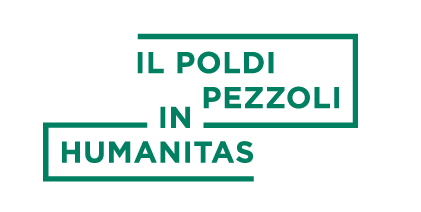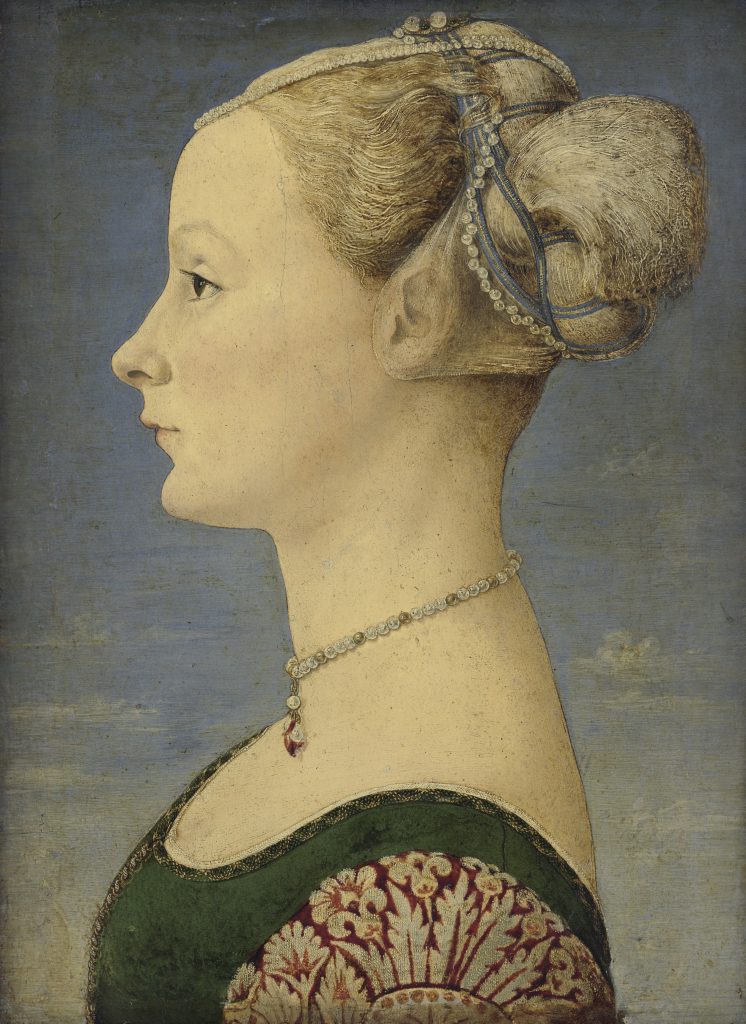
Piero del Pollaiolo
(Florence 1441 – Rome 1496)
Portrait of a Young Woman
1470 circa
Tempera and oil on panel
45,5×32,7 cm
Museo Poldi Pezzoli, Milan

ARTWORKS
The young woman is depicted against a background of blue sky with a few clouds. Her face, shown in profile as per the tradition of portraiture at the time, is finely outlined in black, making it stand out. She wears a low-cut bodice fastened at the front. Her thick hair, contained by a veil, is adorned with a ribbon and a string of pearls. Her forehead is adorned with two fine strings of pearls fastened with gold, the ‘frenello’. She wears a necklace consisting of alternate sets of three white pearls and a golden bead and a large pendant ruby.
The woman’s velvet brocade sleeve with its floral pattern is given particular prominence. At that time sleeves were detachable, fastened to the shoulders, so that they could be removed and replaced with ease. The sleeves were often the most valuable part of a garment: some were adorned with gems and therefore inventoried with the jewels. The lavish hairstyle, gown and jewellery worn by this woman suggest that she is a member of 15th-century Florentine high society.
Her jewels are symbolic references to conjugal love: the white of the pearls evokes purity, while the ruby represents romantic passion. The portrait was probably painted on the occasion of the young woman’s marriage.
Dating from around 1470-1475, the work is part of a well-known series of female portraits by Piero del Pollaiolo, now in various European and American museums.
The extraordinary attention given to the play of light on the lady’s hair, pearls and face shows the influence of innovation introduced by contemporary Flemish painters.
BIOGRAPHY
Piero Benci was born in Florence around 1441. His father sold poultry at the Florence market, hence the painter’s nickname, ‘del Pollaiolo’, which means ‘poulterer’. He trained with his brother Antonio, a goldsmith and sculptor as well as a painter. They also collaborated many times, making it difficult to attribute any of their works that are unsigned or undocumented. We know that the Pollaiolo brothers were interested in the study of human anatomy and that they dissected corpses before Leonardo da Vinci did. Among his many works for churches and palaces in and around Florence, Piero painted a portrait of Galeazzo Maria Sforza (at the Uffizi) for Lorenzo the Magificent, who kept it in his chamber.
In 1493, he followed his brother Antonio to Rome to work with him on statues for the tomb of Pope Sixtus IV in Saint Peter’s Basilica in the Vatican. We know from Antonio’s will dated 1496 that Piero had been dead for some time by that point.
